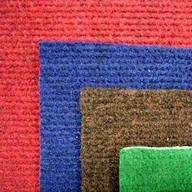Tips for Carpet Repairs

Repairing your carpet or runner
Repairing a carpet or runner at home can be a DIY project, depending on the extent of the damage. Here are some steps you can follow:
-
Assess the Damage: Determine the extent of the damage. Is it a small tear, a snag, or a larger hole? This will dictate the repair method you'll use.
-
Gather Materials: You'll need some basic materials depending on the type of repair needed. This might include scissors, carpet tape, carpet adhesive, a carpet needle, thread, and a carpet patch if necessary.
-
Trim Loose Fibers: If the damage is a snag or loose fibers, carefully trim them with scissors to prevent further unraveling.
-
Repair Small Tears or Holes:
- For small tears or holes, you can use carpet adhesive or carpet tape. Apply adhesive to the edges of the tear or hole and press them together firmly. If using carpet tape, place it underneath the tear, align the edges, and press down firmly.
- If the damage is in a high-traffic area, you might consider reinforcing the repair with a small carpet patch. Cut a patch from a remnant of the same carpet or a hidden area, ensuring it's slightly larger than the damaged area. Apply adhesive to the patch and press it into place over the damaged area.
-
Sew Larger Tears or Holes:
- For larger tears or holes, you'll need to sew the carpet together. Use a carpet needle and strong thread that matches the color of the carpet. Start by threading the needle and knotting the end.
- Carefully stitch the edges of the tear or hole together, using a strong, even stitch. Pull the thread tight to close the gap, but be careful not to distort the carpet fibers.
- Once you've sewn the entire length of the tear or hole, tie off the thread securely and trim any excess.
-
Blend the Repair: After completing the repair, brush the carpet fibers around the repaired area to blend them in with the surrounding carpet.
-
Allow for Drying Time: If you've used adhesive, make sure to allow sufficient drying time before walking on the repaired area.
-
Regular Maintenance: To prevent further damage, make sure to regularly vacuum and maintain your carpet or runner.
If the damage is extensive or if you're unsure about making the repair yourself, it's best to consult a professional carpet repair service. They have the expertise and tools to handle more complex repairs effectively.

